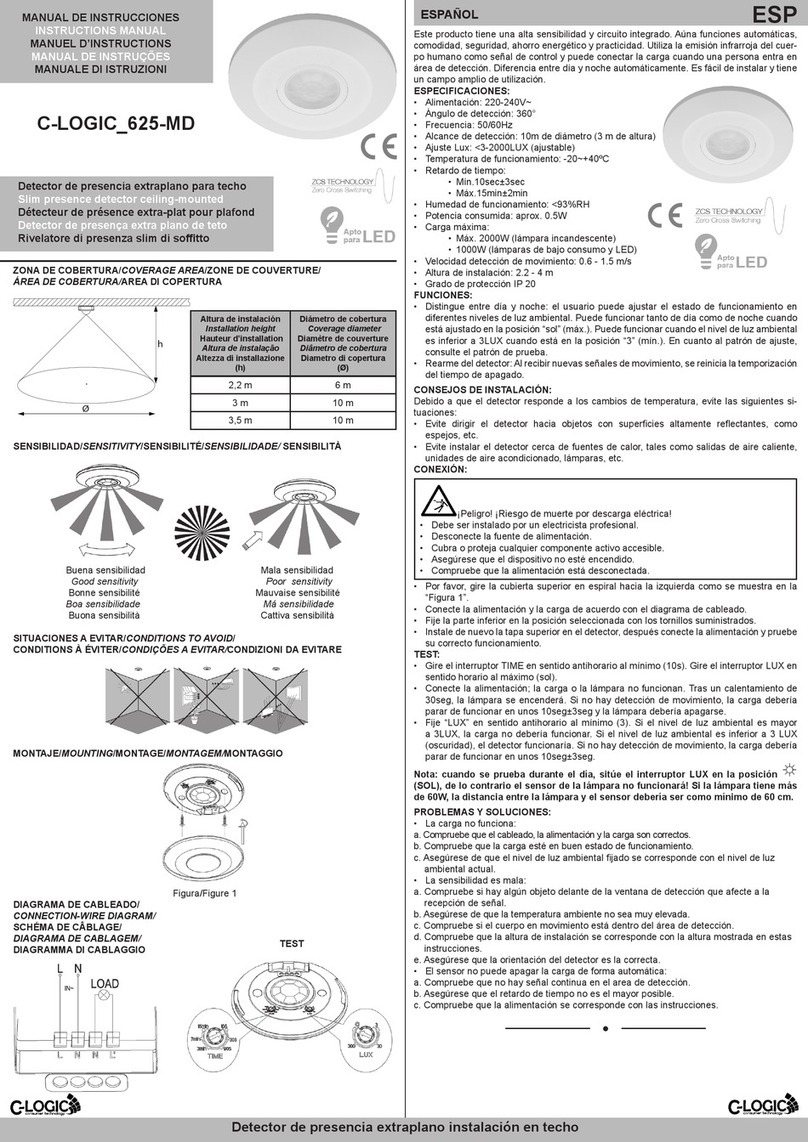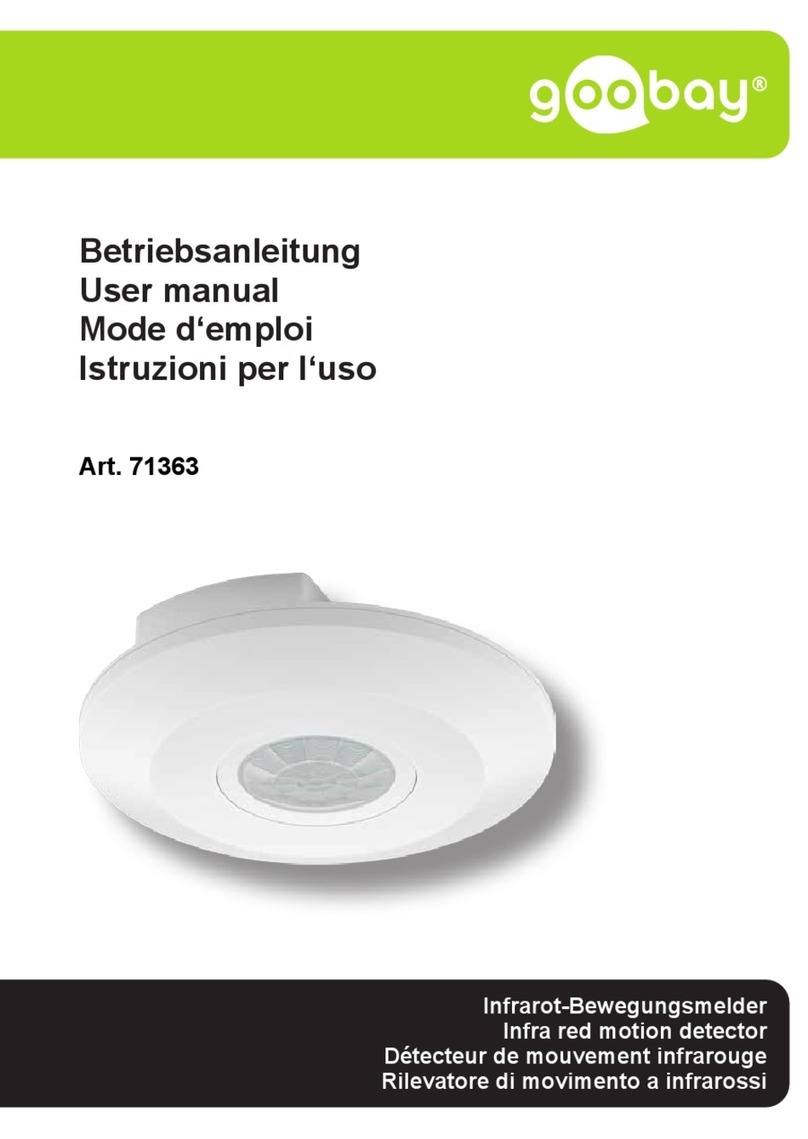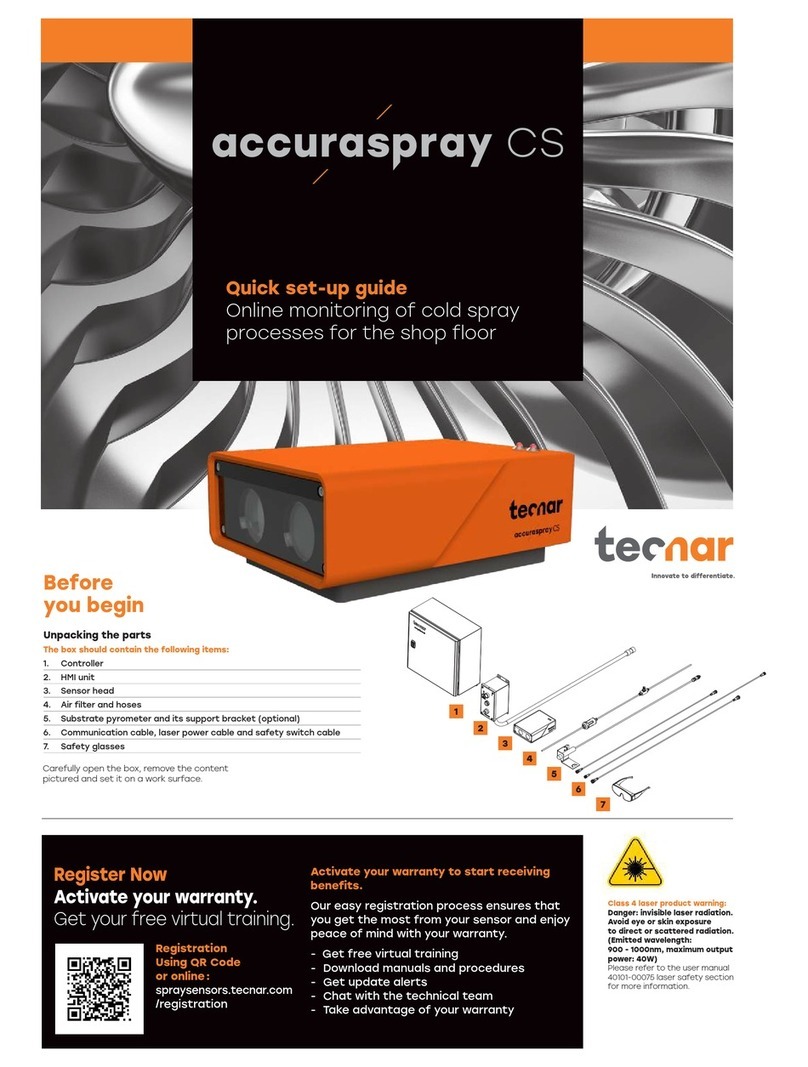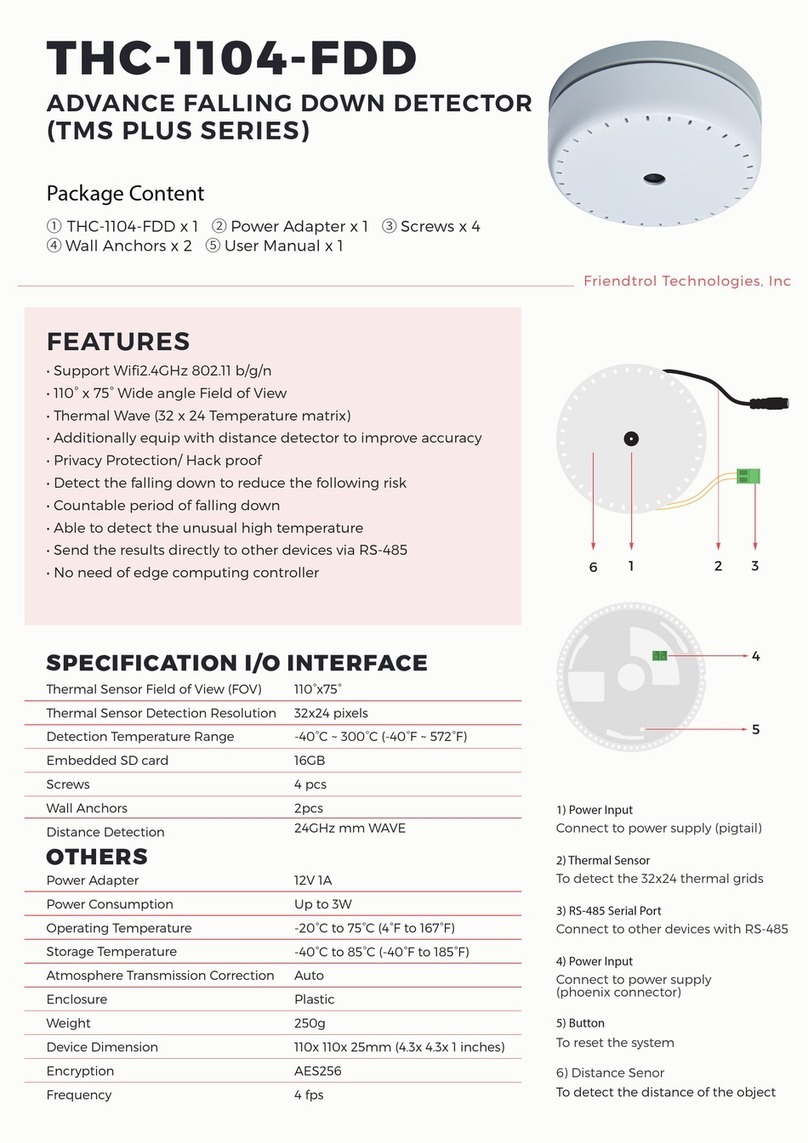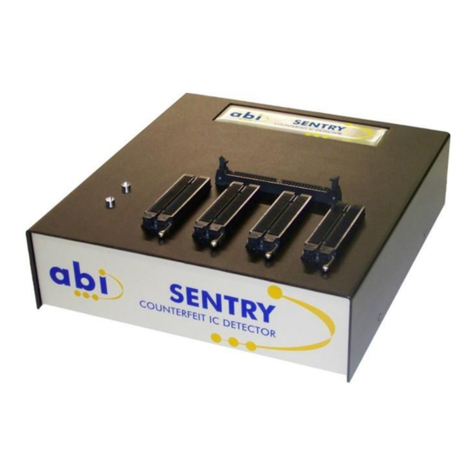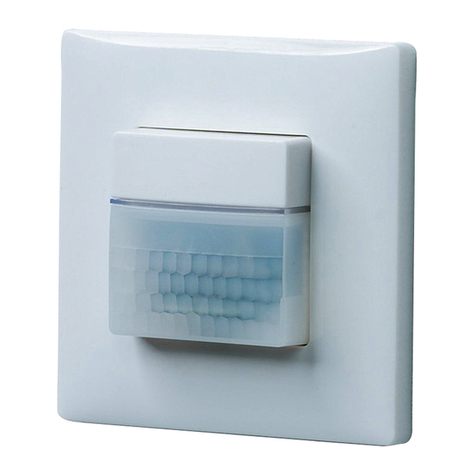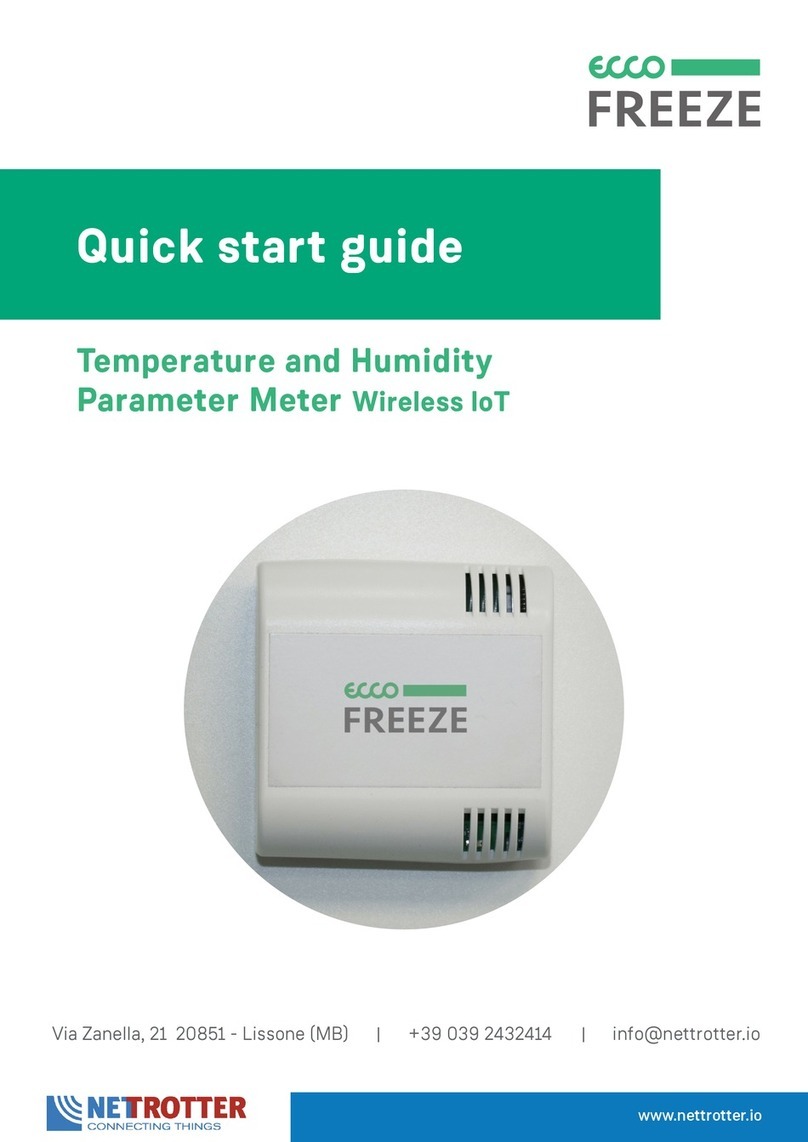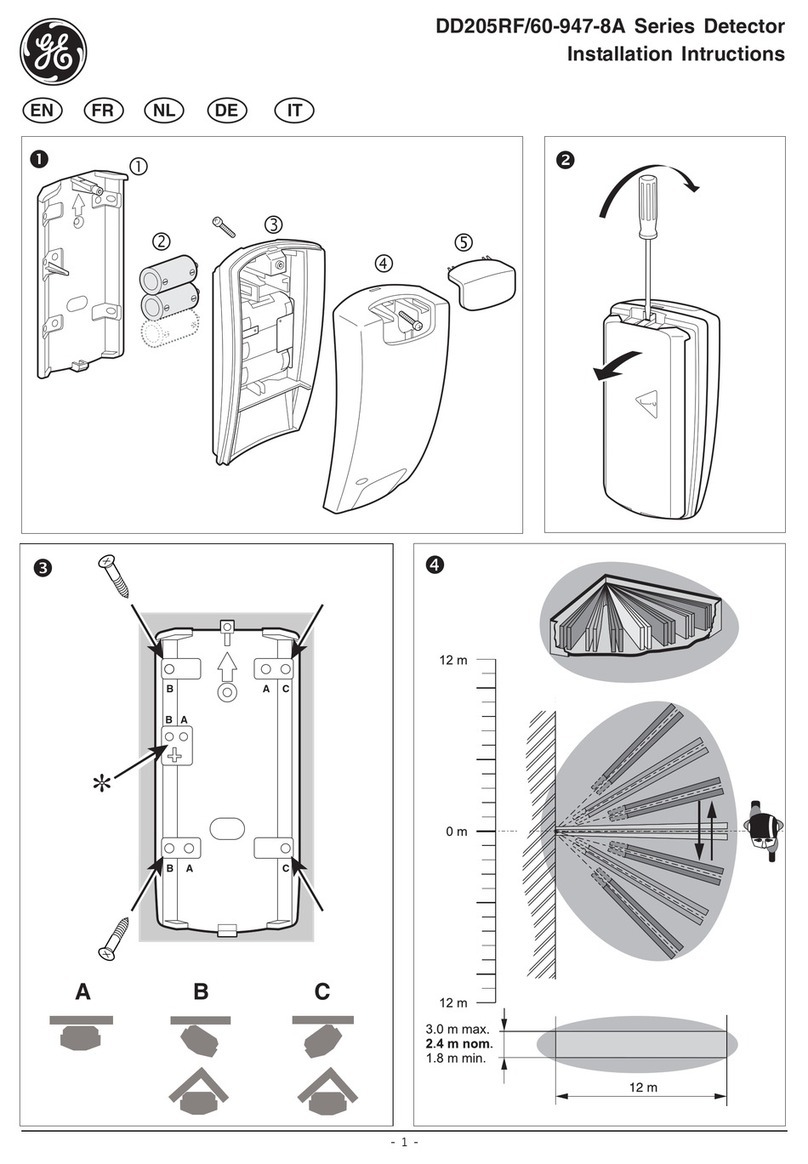Biotage ELSD-1080 User manual

Biotage ELSD-1080
Evaporative Light
Scattering Detector
Operation Manual v1.0
Installation Category II
Pollution Degree 2
Safety Class 1 (EN 61010-1)
ELSD-1080
July 2010
Ref: 6/27400

Biotage ELSD-1080
Biotage offices
Biotage has offices in Sweden, Wales, Japan and the US.
Biotage AB
Kungsgatan 76
SE-753 18 Uppsala
Sweden
Sales: +46 18 56 57 10 (phone)
+46 18 56 57 05 (fax)
Support: +46 18 56 59 11
Biotage GB Limited
Distribution Way
Dyffryn Business Park
Ystrad Mynach
Hengoed CF82 7TS
United Kingdom
Biotage Japan, Ltd.
Medi Coop BLDG. 8 5F
2-4-14 Kichijojihoncho,
Musashinoshi
Tokyo, Japan 180-0004
Sales: +81 (422) 28-1233 (phone)
+81 (422) 28-1236 (fax)
Biotage, LLC
10430 Harris Oaks Blvd.
Charlotte, NC 28269
U.S.A.
Sales: +1 704 654 4900 (phone)
+1 800 446 4752 (toll-free)
+1 704 654 4917 (fax)
Product_info@biotage.com
Support: 1-800-446-4752 press (3) at the auto attendant
Internet
The Biotage web page can be found at: www.biotage.com
2 Publication date: July 2010

Biotage ELSD-1080
Warranty and Liability
See the “Biotage Terms & Conditions of Sale” document at
www.biotage.com.
Copyright
Biotage Sweden AB, is the owner of copyright on this document
and any associated software. Under law, the written permission
of Biotage Sweden AB must be obtained before either the
documentation or the software is copied, reproduced,
translated or converted to electronic or other machine-readable
form, in whole, or in part.
Biotage Sweden AB reserves the right to make changes to the
information contained herein without prior notice.
First published July 2010 in Uppsala, SE. Comments about this
manual should be directed to the Product Manager, Biotage by
© 2010 Biotage Sweden AB
Trademarks
Biotage and are trademarks owned by Biotage AB.
Other product and company names mentioned herein may be
trademarks or registered trademarks and/or service marks of
their respective owners, and are used only for explanation and
to the owners' benefit, without intent to infringe.
Publication date: July 2010 3

Biotage ELSD-1080
This page is intentionally left blank.
4 Publication date: July 2010

Biotage ELSD-1080
Contents
Safety Practices and Hazards .........................................9
General .....................................................................9
Electrical Hazards .......................................................10
Hot Surface Hazards....................................................11
High Pressure Hazards.................................................11
Cleaning ..................................................................11
Other Precautions .......................................................11
Warning and Caution Messages ......................................12
CE Compliance ..........................................................14
Local Biotage Offices or Distributors ................................. 14
1.General Information..............................................15
1.1Introduction .........................................................15
1.2Pre-installation Requirements ................................... 15
1.2.1Conventions .............................................15
1.2.2Notes and Hot Tips .....................................16
1.3Specifications ......................................................16
1.4Unpacking and Installation .......................................17
1.5Packing List ........................................................17
1.6Site Preparation Checklist........................................ 18
1.7Location of the Detector Module ................................ 19
1.8Do’s and Don’ts of ELS Detection...............................19
1.8.1Pumping Systems....................................... 19
1.8.2Mobile Phase Priming ..................................19
1.8.3Solvent Recommendations ............................20
2.Installation .........................................................21
2.1Installation Checklist ..............................................21
2.2Power Connections ............................................... 21
2.3Extraction ...........................................................22
2.4Gas Connection.................................................... 22
2.5Other Connections ................................................25
2.5.1Analog Output ...........................................25
2.5.2Control I/O Connector ..................................25
2.6Fluid Connection................................................... 25
Publication date: July 2010 5

Biotage ELSD-1080
2.6.1Inlet .......................................................25
2.6.2Outlet .....................................................26
2.7Connecting the Detector to Your LC System ..................26
2.8Connecting the Detector to Your PC............................ 27
2.9Biotage ELSD-1080 Software Control .......................... 28
2.10Installing the Standalone Software Utilities .................... 28
2.10.1Configuring the Software Utilities ...................28
3.System Description and General Operation................29
3.1Basic Principles of Operation ....................................29
3.1.1Theory ....................................................30
3.2Operational Parameters ..........................................31
3.3Detector Controls .................................................. 31
3.3.1Display Screen .......................................... 32
3.3.2Keypad ...................................................32
3.3.3Main Menu Bar .......................................... 32
3.3.4Sub-Menu Screen.......................................33
3.3.5Status Mode ............................................. 33
3.3.6Error Conditions .........................................34
3.3.7Clearing an Error........................................34
3.4Operational Parameters ..........................................34
3.4.1Method....................................................34
3.4.2Evaporator Temperature ...............................35
3.4.3Nebulizer Temperature.................................35
3.4.4Evaporator Gas Flow ...................................35
3.4.5Detector Gain (PMT) ................................... 36
3.4.6Response Time (Smoothing)..........................36
3.4.7Light Source Intensity (LED) ..........................36
3.4.8Power Mode .............................................36
3.4.9Data Output Rate (Hz) .................................37
3.5Controlling the Biotage ELSD-1080 Detector Using the Standalone
Software Utilities......................................................... 37
3.5.1Control Software-Overview ............................37
3.5.2Control Software-Parameter Settings ................38
3.5.3Control Software-System Test ........................38
3.5.4Method Editor Software-Overview....................39
3.5.5Method Editor-Creating & Storing Methods ......... 39
3.5.6Method Editor-Downloading Method Sets...........40
3.6Controlling the Biotage ELSD-1080 Detector During an Injection
.......................................................................40
6 Publication date: July 2010

Biotage ELSD-1080
3.6.1Real-time Operation .................................... 40
3.6.2Starting & Stopping Real-time Control ...............40
3.7General Considerations ..........................................41
3.7.1Solvent Recommendations ............................42
3.7.2Sample Preparation ....................................42
3.7.3Column Considerations ................................42
3.7.4Transferring ELSD Temperature Methods .......... 43
4.Routine Maintenance ............................................45
4.1Drying the Diffuser................................................. 45
4.2Cleaning Evaporator Tube .......................................45
4.3Information for Service Personnel............................... 46
4.3.1Heater PCB Fuses ...................................... 46
4.3.2Light Source ............................................. 46
4.4Putting the Detector into Storage................................46
4.5Upgrading the Firmware .......................................... 47
4.5.1Tools Required ..........................................47
4.5.2Firmware Upgrade Procedure.........................47
5.Troubleshooting ..................................................49
5.1Troubleshooting an HPLC System..............................49
5.2Detector Errors..................................................... 50
5.3General Problems .................................................51
APPENDIX 1 – Method Record ......................................55
APPENDIX 2 – Spare Parts Listing .................................57
APPENDIX 3 – Cleaning and Decontamination Procedure ...59
Publication date: July 2010 7

Biotage ELSD-1080
This page is intentionally left blank.
8 Publication date: July 2010

Biotage ELSD-1080
Safety Practices and Hazards
Your Biotage ELSD-1080 detector and accessories have been
carefully designed so that when used properly you have an
accurate, fast, flexible and safe analytical system.
Information about safety practices appears throughout the
documentation provided with your detector and accessories.
Before using the detector or accessories, you must thoroughly
read these safety practices.
Observe all relevant safety practices at all times.
This detector is designed for chromatographic analysis of
appropriately prepared samples. It must be operated using
appropriate gases and/or solvents and within specified
maximum ranges for pressure, flows, and temperatures as
described in this manual. If the equipment is used in a manner
not specified by the manufacturer, the protection provided by
the equipment may be impaired. Biotage assumes no liability
for the customer’s failure to comply with these requirements.
It is the responsibility of the customer to inform Biotage 1-Point
Support Representatives if the detector has been used for the
analysis of hazardous biological, radioactive, or toxic samples,
prior to any detector service being performed or when a
detector is being returned to the service center for repair.
General
Operation of the Biotage ELSD-1080 detector involves the use
of pressurized liquid and hazardous materials including
corrosive fluids and flammable liquids. Careless, improper or
unskilled use of the detector can cause death or serious injury
to personnel, and/or severe damage to equipment and
property.
Biotage ELSD-1080 detectors incorporate a cover that is
designed to prevent inadvertent contact with any potential
hazards. If the detector is used in any manner not specified by
Biotage, this protection may be impaired. It is essential that no
cover is bypassed, damaged or removed.
The safety practices described below are provided to help the
user operate the detector safely. Read each safety topic
thoroughly before attempting to operate the detector and
ALWAYS operate the detector in accordance with these safety
practices.
Follow these safety practices to ensure safe equipment
operation.
•Perform periodic leak checks on all supply lines and
pneumatic plumbing.
Publication date: July 2010 9

Biotage ELSD-1080
•Do not allow gas lines to become kinked or punctured. Place
lines away from foot traffic and extreme heat or cold.
•Store organic solvents in fireproof, vented and clearly
labeled cabinets so they are easily identified as toxic and/or
flammable materials.
•Do not accumulate waste solvents. Dispose of such
materials through a regulated disposal program and not
through municipal sewage lines.
This detector has been tested per applicable requirements of
LVD & EMC Directive as required to carry the European Union
CE Mark. This equipment may be susceptible to
radiation/interference levels or frequencies that are not within
the tested limits.
Electrical Hazards
Exposure to high voltages can cause severe skin damage and
cataracts of the eyes, while close contact with the electrical
components can result in severe heat burns to the skin, and an
electrical discharge which may cause death, severe electric
shock or sub-surface skin burns.
Biotage ELSD-1080 detectors have been carefully designed to
operate safely and effectively when using components that
conform to the design criteria. Use of non-approved
components in the detector may render the system inoperative
and/or hazardous. It may also invalidate the warranty on the
detector. Use only related components supplied or authorized
by Biotage.
Voltages above 110 V AC are present within the detector.
•Disconnect the detector from all power sources before
removing protective panels to avoid exposure to potentially
dangerous voltages. ONLY Customer Service
Representatives trained, qualified, or approved by Biotage
may open panels or covers that are retained by screws on
the detector. Consult the manuals or product labels supplied
with your detector to determine which parts are operator-
accessible.
•Whenever it is likely that the protection has been impaired,
the detector must be made inoperative and be secured
against any unintended operation.
•When it is necessary to use a non-original power cord plug,
make sure the replacement cord adheres to the color-coding
and polarity described in the manual and all local building
safety codes.
•Good grounding/earthing is essential to avoid a potentially
serious electric shock hazard. Consult the manuals or
product labels supplied with your detector for the relevant
grounding requirements.
•Replace blown fuses with fuses of the size and rating shown
on the fuse panel or in the manual.
•Replace faulty or frayed power cords immediately with the
same type and rating.
10 Publication date: July 2010

Biotage ELSD-1080
•Ensure the power switch and appliance coupler at the rear of
the detector remain easily accessible at all times.
•Make sure that voltage sources and line voltage match the
value for which the detector is wired.
•Avoid using power supplies from a source that may be
subject to electrical or RF interference from other services
(for example, large electrical motors, elevators and
welders).
•This detector contains a light source, which has been
classified according to the methods specified in IEC 60825-1
Ed 1.2 as a CLASS 1 LED PRODUCT.
Hot Surface Hazards
Hot surfaces may be exposed when the detector is opened.
These are indicated by a warning label. Allow these surfaces to
cool before touching them.
High Pressure Hazards
If a solvent line ruptures, a relief device opens, or a valve
opens accidentally under pressure, potentially hazardous high
liquid pressures can be generated by the pump causing a high
velocity stream of volatile and/or toxic liquids.
•Wear face protection when you inject samples or perform
routine maintenance.
•Never open a solvent line or valve under pressure. Stop the
pump first and let the pressure drop to zero.
•Use shatterproof solvent reservoirs capable of operating at
50/60 psi.
•Keep the solvent reservoir enclosure closed when the
reservoir is under pressure.
•Read and adhere to all NOTES, CAUTIONS, and WARNINGS
in the manual.
Cleaning
The individual or group responsible for the use and
maintenance of this equipment must ensure that appropriate
decontamination is carried out if hazardous material is spilt on
or inside the detector.
Before using any cleaning or decontamination method except
those recommended by Biotage, users should check with
Biotage that the proposed method will not damage the
equipment.
See Appendix 3 for detailed recommended procedures.
Other Precautions
Use of Biotage ELSD-1080 detectors and accessories may
involve materials, solvents and solutions that are flammable,
corrosive, toxic or otherwise hazardous. Careless, improper or
unskilled use of such materials, solvents and solutions can
Publication date: July 2010 11

Biotage ELSD-1080
create explosion hazards, fire hazards, toxicity and other
hazards that can result in death, serious personal injury or
damage to equipment.
Always ensure that laboratory safety practices governing the
use, handling and disposal of hazardous materials are strictly
observed. These safety practices should include wearing
appropriate safety clothing and safety glasses.
Airflow to the cooling fans of the detector and accessories must
be unobstructed. Do not block the ventilation grills on the
detector and accessories. Consult the manuals supplied with
your PC and monitor for their specific ventilation requirements.
Keep solvents from direct contact with polyurethane gas supply
tubing, as certain solvents will cause weakening and leaks with
possible bursting.
All components of the system should be connected to a
common power supply and common ground. This ground must
be a true ground rather than a floating ground.
Eluents containing non-volatile mineral acids or bases should be
avoided.
Employ static measuring and static discharge devices (e.g., air
ionizers) to safeguard against the buildup of static electricity.
The unit should not be stacked more than two high without
additional means of support and suitable precautions should be
taken to prevent the units being knocked over.
Biotage ELSD-1080 detectors weigh approximately 13 kg
(28.7 lb). To avoid injury to personnel or damage to the
detector or property, always use suitable lifting procedures to
move the detector.
Use only spare parts supplied by Biotage.
Warning and Caution Messages
A Warning message is used in the text when failure to observe
instructions or precautions could result in death or injury. The
lists of symbols that appear in conjunction with warnings are
detailed in the next section.
A Caution message is used when failure to observe instructions
could result in damage to equipment (supplied by Biotage
and/or other associated equipment).
Warning Symbols
The following is a list of symbols that appear in conjunction
with warnings in this manual or on the detector. The hazard
they describe is also shown.
12 Publication date: July 2010

Biotage ELSD-1080
A triangular symbol indicates a warning. The meanings of the
symbols that may appear alongside warnings in the
documentation or on the detector itself are as follows:
Corrosive liquid
Electrical shock
Explosion hazard
Eye hazard
Fire hazard
Heavy weight
(danger to feet)
Heavy weight
(danger to
hands)
Hot surface
Moving parts
The following symbol may be used on warning labels attached
to the detector. When you see this symbol, refer to the relevant
operation or service manual for the correct procedure referred
to by that warning label.
The following symbols appear on the detector for your
information.
I Mains power on.
0 Mains power off.
Fuse.
Single phase alternating current.
Direct current.
When attached to the rear of the detector,
indicates that the product complies with the
requirements of one or more EU directives.
When attached to the rear of the product,
indicates that the product has been certified
(evaluated) to CSA 1010.1 and UL 3101-1.
Publication date: July 2010 13

Biotage ELSD-1080
CE Compliance
Your Biotage ELSD-1080 has been designed to comply with the
requirements of the Electromagnetic Compatibility (EMC)
Directive and the Low Voltage (electrical safety) Directive
(commonly referred to as the LVD) of the European Union.
Biotage has confirmed that each product complies with the
relevant Directives by testing a prototype against the
prescribed EN (European Norm) standards.
Proof that a product complies with these directives is indicated by:
•the CE Marking appearing on the rear of the product,
and
•the documentation package that accompanies the
product contains a copy of the Declaration of
Conformity. The Declaration of Conformity is the legal
declaration by Biotage that the product complies with
the directives listed above, and shows the EN standards
to which the product was tested to demonstrate
compliance. It is signed by Biotage Authorized
Representative.
Local Biotage Offices or Distributors
We stress the importance of standard laboratory safe practice
(e.g., COSHH regulations) for dealing with electronic laboratory
equipment, solvents, etc., in preventing accidents, fires, or
potentially hazardous conditions.
If in any doubt about the use of the detector contact your local
Biotage office or local distributor.
The Biotage Internet home page can be found at:
www.Biotage.com
14 Publication date: July 2010

Biotage ELSD-1080
1. General Information
1.1 Introduction
The Biotage Evaporative Light Scattering Detector (ELSD) is a
unique and highly sensitive detector for semi-volatile and non-
volatile solutes in a liquid stream. It is mainly used as a
concentration detector for liquid chromatography. The solvent
stream containing the solute material is nebulized and carried
by a gas flow through an evaporation chamber. The solvent is
volatilized, leaving a mist of solute particles that scatter light to
a photosensitive device. The signal is amplified and a voltage
output provides the concentration of the solute particles
passing through the light.
Biotage ELSD-1080 detectors may be used alone, or as one of
several detectors in an LC or flash system. As the solvent or
eluent is evaporated in the course of the purification, the ELSD-
1080 detector must be the last in series if used in conjunction
with other detectors. If the ELSD-1080 detector is being used as
the last detector in a series, care must be taken not to exceed
the recommended backpressure in detector cells in other units.
This manual instructs the user in the installation and operation
of the ELSD-1080 detector for stand-alone use.
1.2 Pre-installation Requirements
The Biotage ELSD-1080 operation manual describes the
environmental and operating requirements of the detector. You
must prepare your laboratory according to these instructions
before the detector can be installed. If you have misplaced your
copy, you can obtain a replacement from your local Biotage
office.
You have been provided with this operation manual to help you
set up and operate your ELSD-1080. This operation manual
contains safety practices and hazards information, where to
find information about installing and maintaining detector
components and a brief operation overview.
1.2.1 Conventions
The following conventions have been used throughout the
documentation:
•Menus, menu options and field names (e.g., choose
Copy from the Edit menu) have been typed in bold.
Bold is also used to signify the buttons appearing
throughout the software (e.g., click OK).
•ALL CAPITALS indicate keyboard commands (e.g., press
the F2 key) and text you must type in from the
keyboard (e.g., type SETUP at the prompt).
Publication date: July 2010 15

Biotage ELSD-1080
1.2.2 Notes and Hot Tips
A Note is used to give advice or information.
A Hot Tip is used to give practical hints to help you achieve the
best possible performance from your detector.
1.3 Specifications
The detector is suitable for indoor use only and is classified
suitable under the following categories (EN 61010-1):2001
Installation category II
Pollution degree 2
Safety class 1
Light Source LED 480nm (Class 1 LED product)
Detector PMT with digital signal processing
Nebulizer OFF, 25-90 °C
Evaporator
Biotage ELSD-1080 OFF, 10-80 °C
Gas Flow Range 0.9-3.25 SLM with controlled gas shut-
off valve
Operating Pressure 60-100 psi (4-6.7 bar)
Eluent Flow range 0.2-5.0 mL/min
Digital Output 10 or 40Hz (24bit)
Analog Output 0-1V FSD
Communication Serial (RS232)
Remote Start Input
Pump Stop: 1 Contact closure
Power Requirements 90/120V AC or 220/250V AC 50/60 Hz
2A Max
Power Consumption 150 W (max)
Dimensions (WxDxH) (unpacked) 200 x 450 x 415 mm
Weight (unpacked) 13 kg (ELSD-1080)
Weight (packed) 18 kg (ELSD-1080)
PC Control (software) Biotage ELSD Control Software
Remote Operation Remote Start Input
Safety Features Gas shut off Valve, Leak Detection
Table 1. Biotage ELSD-1080 Performance Specifications
16 Publication date: July 2010

Biotage ELSD-1080
1.4 Unpacking and Installation
Care has been taken to ensure that the detector should be
received in proper condition. The packing and protection are
designed for normal hazards of road, rail or air transit. Any
damage to the container or detector should be reported
immediately to your local distributor, or to Biotage. It is
recommended that the shipping container be kept, if possible,
for re-shipment or return to a service centre.
Examine the shipping carton for visible signs of exterior
damage. Unpack the detector and examine it for transit
damage. Check that all items on the packing list are included.
Notify your local distributor or Biotage of any damage or
missing items.
1.5 Packing List
•Biotage ELSD-1080
•Operation Manual
•ELSD Control Software
•Mains leads (UK, EUR, USA)
•RS232 data cable
•Analog output Cable
•Gas Tubing (2 m)
•PVC Exhaust hose (2 m)
•Tygon® SE200 waste hose (7 cm)
•500-mL Solvent waste container
Publication date: July 2010 17

Biotage ELSD-1080
1.6 Site Preparation Checklist
Environmental
conditions
Temperature 10 to 35 °C (50 to 95 °F).
At constant temperature.
Avoid positioning in direct sunlight.
Humidity 10-80%.
Power USA & Japan 115V (AC) ±10%.
50/60 Hz, 2A max, with protective earth
connection.
Europe 230V (AC) ±10%.
50/60 Hz, 2A max, with protective earth
connection.
Note: Ensure the power switch and appliance
coupler remain accessible at all times.
Bench space
The standard detector will require the following
bench space:
•width 25 cm (9.8”)
•depth 60 cm (23.6”)
•height 41.5 cm (16.3”)
Note: The detector can be computer controlled
and additional bench space will be required for
the computer.
Gas Supply Nitrogen (>98% purity, filtered to 0.2 µm).
Air can only be used for non-flammable solvents.
The detector is not calibrated for use with gases
other than air or nitrogen.
Nitrogen generator strongly recommended for
best performance.
For operation with other inert gases contact
Biotage for advice.
Extraction
requirements
The exhaust gases from the detector must be
extracted to a fume hood or similar extraction unit.
The PVC extraction tube provided can be
extended if necessary, provided the diameter of
the extension tube used is >50 mm.
Table 2. Site Preparation Checklist
Warning
Biotage ELSD-1080 detectors weigh approximately
13 kg (28.7lb). To avoid injury to personnel or damage
to equipment, always follow all precautions for lifting
heavy objects when moving the detector. It is advisable
to locate the system on a sturdy bench.
18 Publication date: July 2010

Biotage ELSD-1080
1.7 Location of the Detector Module
Place the detector conveniently near your Isolera flash system.
The modular design of Biotage ELSD-1080 detectors enables
you to locate it anywhere within the limitations imposed by the
length of the power cord, fluid lines and signal cables.
In order to keep liquid dead volume as low as possible and to
minimize peak broadening in the lines, the distance between
the cartridge outlet and the flow cell inlet should be kept to a
minimum.
Provide approximately four inches (10 cm) of space behind the
unit so that the cooling fan intake is not impeded, and to allow
easy access to the rear panel.
The ELSD-1080 detector can be placed within 2 meters of an
extraction unit, using the exhaust tube provided.
1.8 Do’s and Don’ts of ELS Detection
1. NEVER block the exhaust outlet as this causes increased
back-pressure on the nebulization chamber. High
pressures on the internal chamber will lead to increased
baseline noise and low sensitivity.
2. NEVER allow the solvent waste outlet tube to become
immersed in the waste solvent as this will create
backpressure on the nebulization chamber; leading to
increased noise.
3. When placing more than one detector in series, always
place the ELSD-1080 detector last.
4. Only volatile mobile phase additives can be used the
ELSD. See Table 5 (page 43). The use of non-volatile
buffers will lead to increased baseline noise levels.
1.8.1 Pumping Systems
It is recommended to use a high-performance pumping system
(e.g. Isolera One or Isolera Four) with no flow pulses to
minimize nebulization problems. Inconsistent solvent flow will
result in poor reproducibility.
A backpressure regulator maybe necessary on certain pumps in
order to minimize pulsation. This can also be achieved by the
column itself or a coil of 0.005 inch (0.127 mm) ID tubing
placed between the pump and the column.
1.8.2 Mobile Phase Priming
Biotage ELSD-1080 does not require any mobile phase priming,
other than that required to prime the solvent through the
pump, damper, injector, cartridge, etc. It is recommended that
priming of the Isolera system be performed without the ELSD-
1080 detector attached, to prevent non-volatile impurities
contaminating the ELSD-1080 detector.
If operating in reversed-phase mode the mobile phase should be
degassed and filtered, either by sparging with Helium or sonication.
Publication date: July 2010 19

Biotage ELSD-1080
1.8.3 Solvent Recommendations
The maximum operating temperature of the detector and the
boiling point of the solvent will determine the type of solvents
compatible with the Biotage ELSD-1080 detector. High boiling
point solvents such as N-Methylpyrrolidone (NMP),
Dimethylsulfoxide (DMSO) are not recommended for long-term
operation. Greater care and attention to detector cleaning
procedures should be exercised with these solvents.
It is recommended that any solvent be flushed from the
detector for overnight and weekend storage.
20 Publication date: July 2010
Table of contents
Popular Security Sensor manuals by other brands
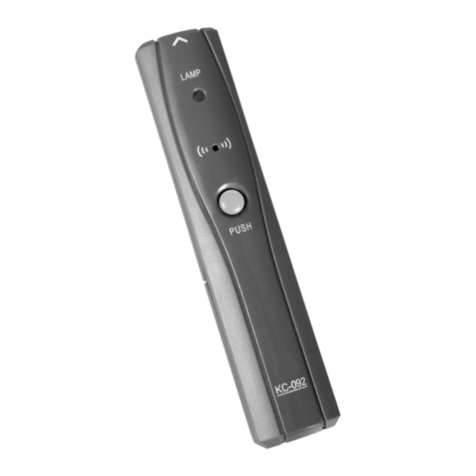
KeCheng
KeCheng KC-092 Operation manual
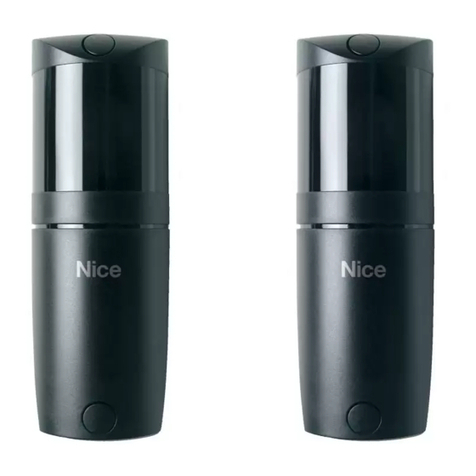
Nice
Nice F210B Instructions and warnings for the fitter

SKYDDA
SKYDDA GUIDE 601 Instructions of use
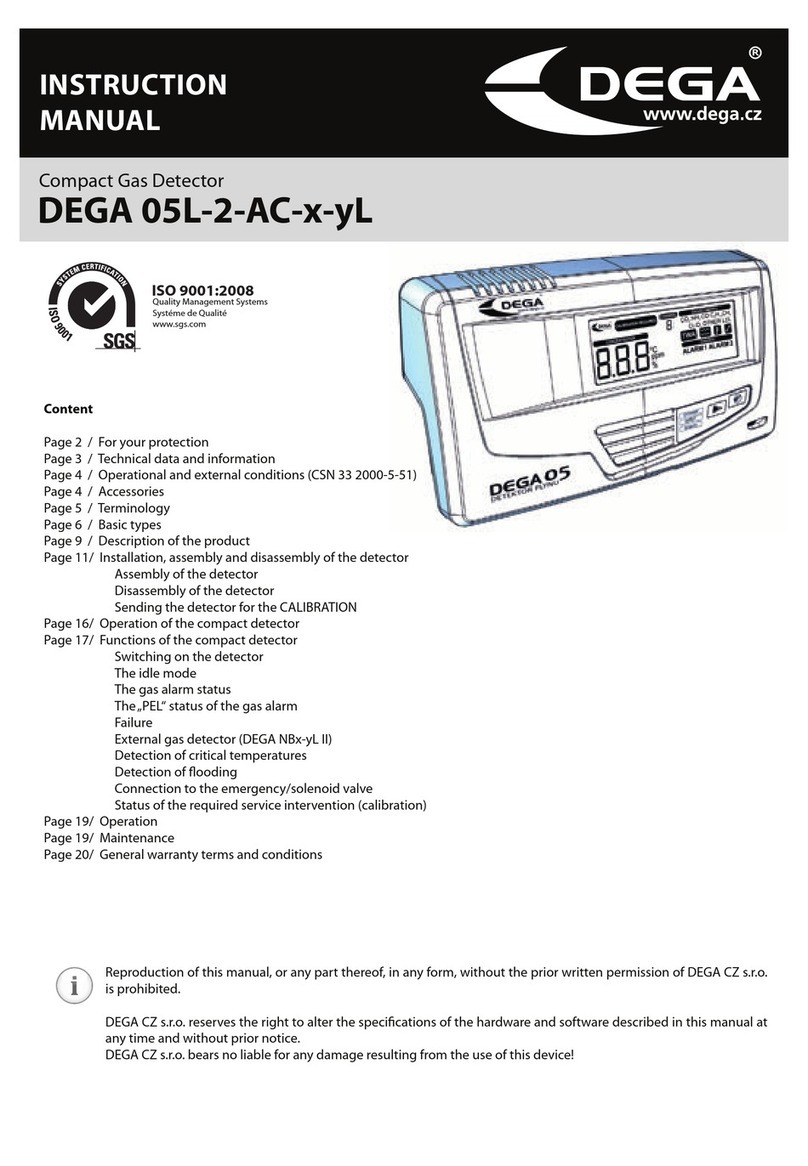
DEGA
DEGA 05L-2-AC-x-yL instruction manual
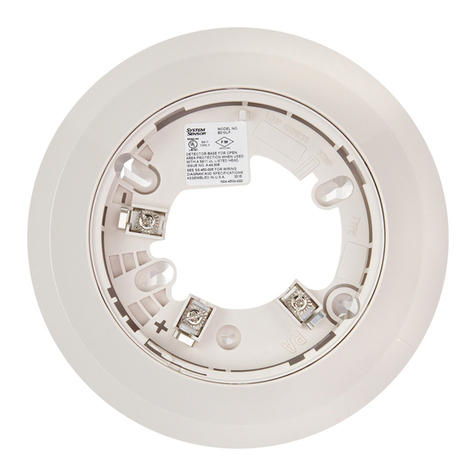
System Sensor
System Sensor B210LP Installation and maintenance instructions
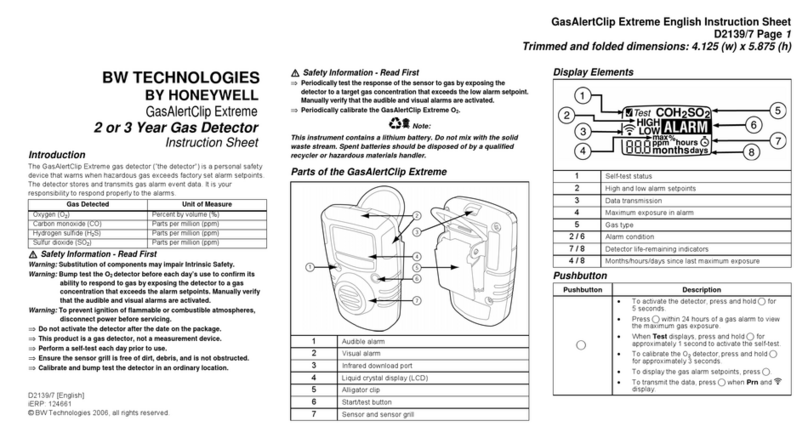
BW Technologies
BW Technologies GasAlertClip Extreme SO2 instruction sheet



